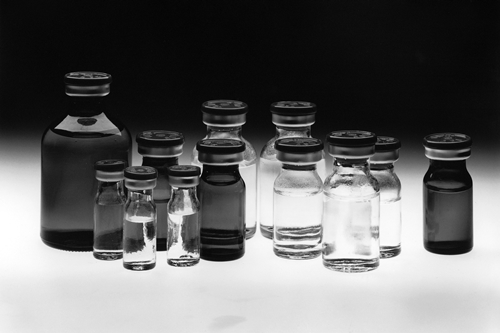10 May 2017. Focused sound waves aimed at nanoscale bubbles filled with a cancer drug, were shown in lab mice to improve delivery of the drug to a particularly hard-to-treat cancer. Test results of the technique conducted at University of Turin in Italy appeared in yesterday’s issue of the journal Endocrine-Related Cancer, published by Society for Endocrinology.
The Turin team led by cancer researcher Maria Graziella Catalano is seeking better ways to treat cancers often considered difficult to reach. Among these types of cancer is anaplastic thyroid cancer, a rare form of the disease affecting about 1 percent of all thyroid cancer cases. However, anaplastic thyroid cancer is also among the most aggressive and deadly thyroid cancers, with an average survival time of about 5 months.
Compounding the problems with this disease is only one approved chemotherapy drug, doxorubicin, to treat it. Doxorubicin benefits only about 1 in 5 patients (22%) and, because of its toxicity, the drug must be carefully targeted to prevent adverse side effects, including cardiac problems. One way of better targeting chemotherapies is with nanoparticle forms that enable tiny pieces of the drug to accumulate at the tumor site, rather than flowing the drug through the general blood stream. But when tried previously, doxorubicin nanoparticles experienced problems reaching tumors, due to leakage and misdirected delivery through the tumor’s blood vessels.
In this study, Catalano and colleagues tested a technique called extracorporeal shock waves, that sends highly targeted ultrasound into the tumors to release nanoscale forms of the chemotherapy drug. Extracorporeal shock waves are a non-invasive therapy for breaking up kidney stones and treating orthopedic conditions such as plantar fasciitis and tendonitis, where the waves are aimed at targets from outside the body.
This time, the shock waves are aimed at nanoscale gas bubbles filled with doxorubicin. The nanobubbles are designed to accumulate at the tumor site, where the drug is released into the tumor after being exposed to extracorporeal shock waves.
The researchers tested the technique in mice grafted with human anaplastic thyroid cancer. For comparison, other groups of mice with the same cancer grafts were given the drug-filled nanobubbles but no extracorporeal shock waves, or standard doxorubicin treatments, or were left untreated.
Mice receiving both nanobubbles and the ultrasound waves had more accumulation of drugs in their tumors, as well as more loss of tumor volume, greater tumor cell death, and less cancer cell proliferation than mice receiving other or no treatments. The team also checked the hearts of the mice and found no damage in the nanobubble and ultrasound-treated mice, while the hearts of mice receiving the other doxorubicin treatments showed signs of fibrosis and oxidative stress.
These findings led the authors to conclude that the combination of doxorubicin-loaded nanobubbles with extracorporeal shock waves are a promising treatment strategy for anaplastic thyroid cancer, or ATC, and other solid-tumor cancers. “Given the promising results of this preclinical study and the lack of a standard therapy for ATC,” says Catalano in a Society for Endocrinology statement, “the next step will be conducting clinical trials with the hope of improving the cancer treatment and patient quality of life.”
More from Science & Enterprise:
- Nanoparticle Vaccine Stops Tumor Growth
- Nanoparticles Boost T-Cells to Fight Leukemia
- Prodrugs Designed to Better Target Cancer Therapies
- Technique Uses Light to Activate Drugs in Blood Cells
- Electronic Pulses Shown to Induce Cancer Immune Response
* * *


 RSS - Posts
RSS - Posts
[…] Sound Waves, Nanotech Delivery Boost Cancer Drug […]
[…] Sound Waves, Nanotech Delivery Boost Cancer Drug […]